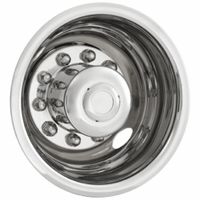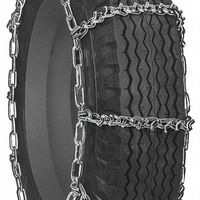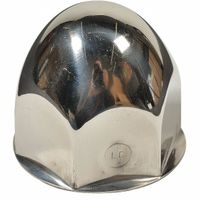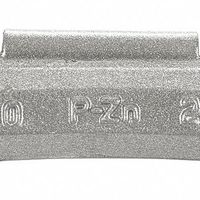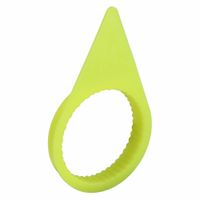Call +(254) 703 030 000 / 751 483 999 / 721 704 777
- Home
- Fleet Vehicle Maintenance
- Tire Brake Maintenance
- Tire Wheel Performance
Tire & Wheel Performance
Tire and wheel performance products improve the operation of tire and wheel assemblies. Tire traction devices wrap around tires to provide additional traction on challenging terrain. Wheel balancing helps ensure the wheel assembly has an even distribution of weight to smooth the ride and avoid uneve .....Read More
Frequently Asked Questions
What are the benefits of using tire traction devices?
Tire traction devices, such as snow chains or tire socks, offer several benefits, particularly in adverse weather conditions. They enhance vehicle safety by providing increased grip on slippery surfaces like snow, ice, or mud, reducing the risk of skidding and improving overall vehicle control. This enhanced traction allows for safer driving, especially in mountainous or rural areas where roads may not be regularly cleared.
These devices also improve braking performance, reducing stopping distances on slick surfaces. This is crucial in emergency situations where quick stopping can prevent accidents. Additionally, tire traction devices can enhance the vehicle's ability to climb steep inclines, which is particularly beneficial in snowy or icy conditions where tires alone might struggle to gain traction.
For vehicles without all-wheel drive, traction devices can temporarily provide similar benefits, making them a cost-effective solution for occasional use in winter conditions. They are relatively easy to install and remove, offering flexibility for drivers who encounter varying road conditions.
Moreover, using tire traction devices can prevent wear and tear on tires by reducing the likelihood of spinning wheels, which can cause excessive tire wear. This can extend the lifespan of the tires and potentially save money in the long run.
In some regions, the use of tire traction devices is legally required during certain weather conditions, ensuring compliance with local laws and avoiding fines. Overall, tire traction devices are a practical investment for enhancing vehicle safety and performance in challenging driving conditions.
How does wheel balancing improve vehicle performance?
Wheel balancing improves vehicle performance by ensuring that the weight of the wheel-tire assembly is evenly distributed around the axle. This process involves adding small weights to the wheel to counterbalance any heavy spots. Here’s how it enhances performance:
1. **Smooth Ride**: Properly balanced wheels prevent vibrations that can be felt in the steering wheel, floorboard, or seat. This results in a smoother and more comfortable ride for the driver and passengers.
2. **Tire Longevity**: Imbalanced wheels cause uneven tire wear, leading to premature tire replacement. Balancing helps ensure even wear, extending the life of the tires and saving on replacement costs.
3. **Improved Fuel Efficiency**: When wheels are balanced, the vehicle experiences less rolling resistance. This means the engine doesn’t have to work as hard to move the vehicle, improving fuel efficiency.
4. **Enhanced Handling and Safety**: Balanced wheels contribute to better vehicle handling and stability, especially at higher speeds. This improves the driver’s control over the vehicle, enhancing safety.
5. **Reduced Strain on Suspension and Steering Components**: Imbalanced wheels can cause excessive vibrations that put additional stress on suspension and steering components. Balancing reduces these vibrations, minimizing wear and tear on these parts and potentially reducing maintenance costs.
6. **Noise Reduction**: Imbalanced wheels can cause noise issues, such as humming or buzzing sounds. Balancing helps eliminate these noises, contributing to a quieter cabin environment.
Overall, wheel balancing is a crucial maintenance task that supports optimal vehicle performance, safety, and comfort. Regular balancing, typically during tire rotations or when new tires are installed, ensures these benefits are consistently realized.
What is the importance of maintaining wheel lug nuts?
Maintaining wheel lug nuts is crucial for vehicle safety and performance. Lug nuts secure the wheels to the vehicle, ensuring stability and proper alignment. If they are not properly maintained, several issues can arise.
Firstly, loose lug nuts can lead to wheel detachment while driving, posing a significant safety risk. This can cause loss of vehicle control, leading to accidents. Regularly checking and tightening lug nuts to the manufacturer's specified torque prevents this hazard.
Secondly, unevenly torqued lug nuts can cause wheel imbalance, leading to vibrations while driving. This not only affects ride comfort but can also lead to uneven tire wear, reducing tire lifespan and increasing maintenance costs.
Additionally, over-tightening lug nuts can damage the wheel studs, making them prone to breakage. This can also lead to wheel detachment. Using a torque wrench ensures that lug nuts are tightened to the correct specification, preventing damage to the wheel assembly.
Corrosion is another concern. Lug nuts exposed to moisture and road salt can rust, making them difficult to remove and potentially weakening their hold. Regular inspection and cleaning, along with the application of anti-seize compounds, can prevent corrosion.
Finally, maintaining lug nuts is essential for efficient vehicle performance. Properly secured wheels ensure optimal contact with the road, improving handling, braking, and fuel efficiency.
In summary, maintaining wheel lug nuts is vital for safety, vehicle performance, and cost efficiency. Regular inspection, cleaning, and correct torquing are simple yet effective practices to ensure the integrity of the wheel assembly and overall vehicle safety.
How do hub caps protect the wheel assembly?
Hub caps, also known as wheel covers, primarily serve to protect the wheel assembly by acting as a barrier against environmental elements and physical damage. They shield the wheel hub and lug nuts from dirt, dust, and moisture, which can lead to corrosion and rust over time. By preventing the accumulation of debris, hub caps help maintain the integrity of the wheel components, ensuring they function properly and last longer.
Additionally, hub caps protect the wheel assembly from physical impacts. They can absorb minor bumps and scrapes that might otherwise damage the wheel or its components. This protective function is particularly important in urban environments where curbs and road debris are common hazards.
Hub caps also play a role in maintaining the aerodynamics of a vehicle. By covering the wheel hub, they reduce air drag, which can contribute to improved fuel efficiency. This aerodynamic benefit, while minor, is an added advantage of using hub caps.
Furthermore, hub caps can help in maintaining the wheel's balance. By providing a uniform cover, they ensure that the wheel's weight distribution remains consistent, which is crucial for smooth driving and reducing wear on tires and suspension components.
In summary, hub caps protect the wheel assembly by preventing corrosion, shielding against physical damage, enhancing aerodynamics, and maintaining wheel balance, all of which contribute to the longevity and performance of the vehicle's wheels.
What are dually wheel simulators and their purpose?
Dually wheel simulators are accessories designed to enhance the appearance and functionality of dual rear wheel (DRW) vehicles, commonly known as "dually" trucks. These vehicles have two wheels on each side of the rear axle, providing increased load-carrying capacity and stability. Dually wheel simulators are typically made from stainless steel or high-quality chrome-plated materials, offering a polished, mirror-like finish that mimics the look of expensive alloy wheels.
The primary purpose of dually wheel simulators is aesthetic enhancement. They provide a cost-effective way to upgrade the appearance of a vehicle by covering the standard steel wheels with a more attractive finish. This is particularly appealing for owners who want their trucks to have a more polished and professional look without the expense of purchasing and maintaining custom wheels.
In addition to aesthetics, dually wheel simulators offer practical benefits. They protect the underlying wheels from dirt, debris, and weather-related damage, potentially extending the life of the wheels. The simulators are designed to be easy to install and remove, often using a snap-on or bolt-on mechanism that does not require specialized tools or equipment.
Furthermore, dually wheel simulators can improve the resale value of a vehicle by maintaining the condition of the original wheels and enhancing the overall appearance. They are available in various designs and finishes, allowing vehicle owners to customize the look of their trucks according to personal preference.
Overall, dually wheel simulators serve as a functional and stylish accessory for dually truck owners, combining visual appeal with protective benefits.
How do tire and wheel accessories contribute to vehicle maintenance?
Tire and wheel accessories play a crucial role in vehicle maintenance by enhancing performance, safety, and longevity. Tire pressure monitoring systems (TPMS) are essential for maintaining optimal tire pressure, which improves fuel efficiency, extends tire life, and ensures safety by reducing the risk of blowouts. Wheel alignment tools help maintain proper alignment, preventing uneven tire wear and improving handling and fuel economy.
Wheel weights are used for balancing tires, which reduces vibrations, enhances ride comfort, and prevents premature wear on suspension components. Valve stem caps protect the valve from dirt and moisture, ensuring proper air retention and preventing leaks. Tire inflators and pressure gauges allow for regular pressure checks and adjustments, crucial for maintaining the recommended pressure levels.
Tire repair kits, including sealants and plugs, provide quick fixes for punctures, minimizing downtime and preventing further damage. Wheel spacers and adapters can improve vehicle stability and handling by optimizing wheel positioning. Lug nut covers and locks protect against theft and corrosion, ensuring wheels remain securely attached.
Tire chains and snow socks enhance traction in adverse weather conditions, improving safety and control. Rim protectors prevent curb damage, preserving the aesthetic and structural integrity of wheels. Hubcaps and wheel covers protect wheel components from dirt and debris, reducing maintenance needs.
Overall, these accessories contribute to vehicle maintenance by ensuring tires and wheels function efficiently, safely, and last longer, ultimately reducing repair costs and enhancing driving experience.
What components are included in air brake systems for trucks?
Air brake systems for trucks typically include the following components:
1. **Air Compressor**: Generates and supplies compressed air to the system, driven by the truck's engine.
2. **Air Reservoirs (Tanks)**: Store compressed air for use in the braking system, ensuring a ready supply when needed.
3. **Air Dryer**: Removes moisture and contaminants from the compressed air to prevent corrosion and freezing in the system.
4. **Brake Pedal (Foot Valve)**: The driver-operated control that regulates air pressure to the brakes, initiating the braking process.
5. **Brake Chambers**: Convert compressed air pressure into mechanical force to apply the brakes. They contain a diaphragm and pushrod.
6. **Slack Adjusters**: Mechanical linkages that adjust the distance between the brake shoes and the drum, ensuring consistent brake application.
7. **Brake Drums and Shoes**: The friction components where the mechanical force is applied to slow down or stop the vehicle.
8. **Relay Valves**: Speed up the application and release of brakes by controlling air flow to the brake chambers.
9. **Brake Lines and Hoses**: Transport compressed air from the reservoirs to the brake chambers.
10. **Pressure Gauges**: Display the air pressure levels in the system, allowing the driver to monitor system status.
11. **Safety Valve**: Prevents over-pressurization by releasing excess air if pressure exceeds a safe level.
12. **Parking Brake System**: Typically a spring brake system that holds the vehicle stationary when parked, activated by releasing air pressure.
13. **ABS (Anti-lock Braking System)**: Prevents wheel lock-up during braking by modulating brake pressure, enhancing control and safety.
14. **Governor**: Regulates the air compressor's cut-in and cut-out pressure levels to maintain optimal air pressure in the system.
These components work together to ensure effective and reliable braking performance for heavy-duty trucks.
